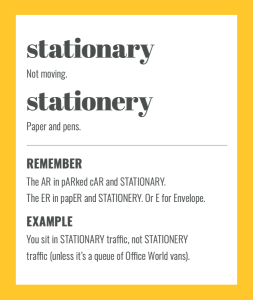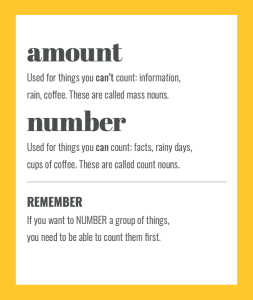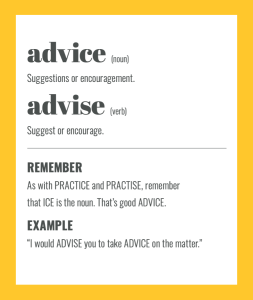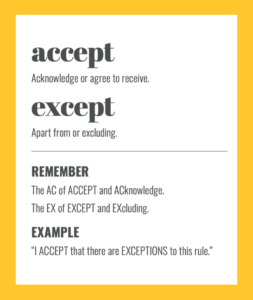Of course you could! Here goes:
Stationery vs stationary: simple tips to remember the difference
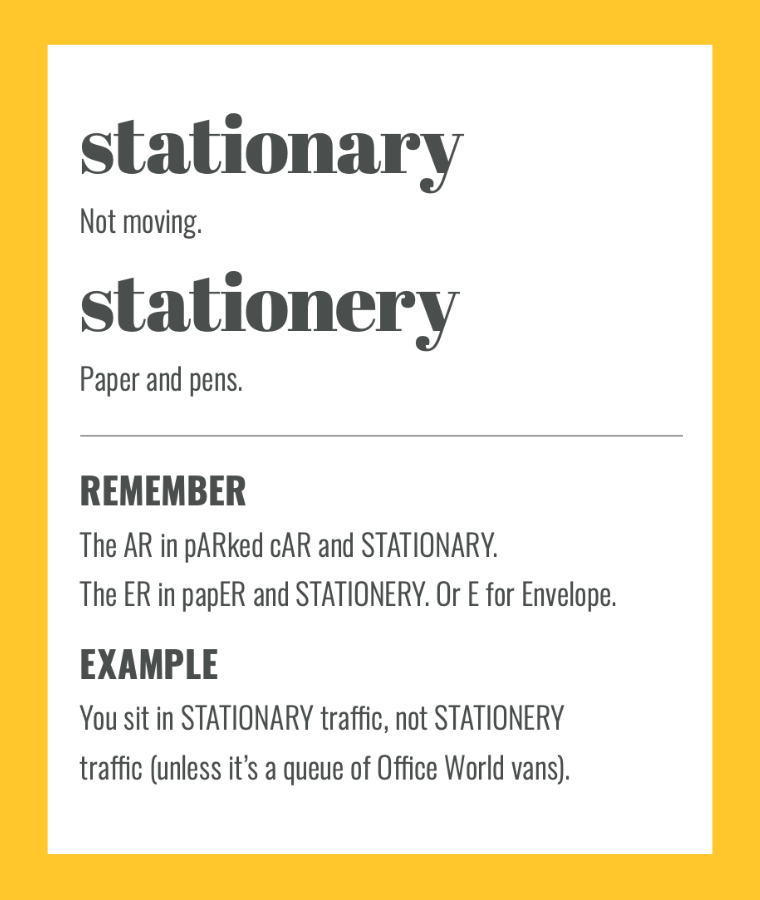
STATIONERY vs STATIONARY: which is which? Tips and tricks to remember the difference
STATIONERY and STATIONARY are commonly confused – and often by people who really should know better. I’ve seen graphic designers and printers offering ‘eye-catching STATIONARY’ more times than I care to remember – most recently in a glossy brochure promoting the services of a Gloucester-based design agency.
It makes me cringe – and I’m not the only one. So, here’s a simple tip to help you remember the correct spelling every time.
STATIONERY is a noun that means the tools used in offices, or for writing – paper and pens, in a nutshell.
You can remember E for Envelopes, or ER in papER.
For example:
“I used to love going back to school after the long summer holidays. It was always a good excuse to buy new STATIONERY.”
STATIONARY is an adjective used to describe something that’s still, or not moving.
Remember the AR in pARked cAR.
For example:
“Sorry I’m late – I was stuck in STATIONARY traffic.”
“Sorry I’m late – I was stuck in STATIONERY traffic” makes no sense. Unless it was a queue of Office World vans.
I hope this simple tip helps you remember the difference between STATIONERY and STATIONARY.
Get more tips in The Little Book of Confusables
Number vs amount: top tips to remember which is which
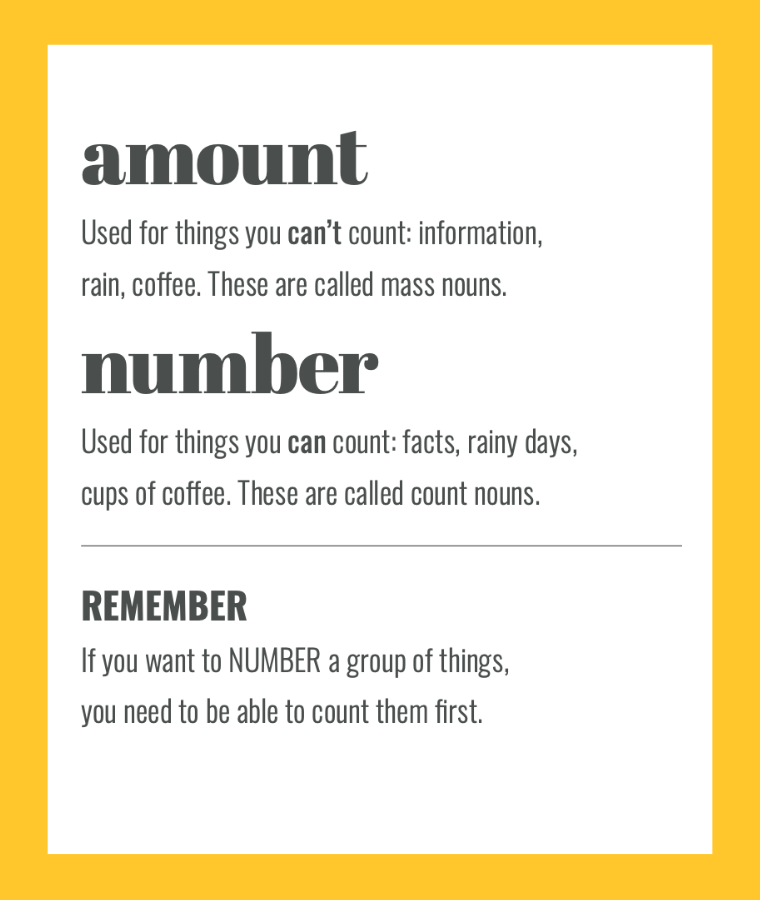
Number vs amount: this simple tip will help you remember the difference
To start with, it can help to know that things you can count are called count nouns, and things you can’t count are called mass nouns.
Use AMOUNT for things you can’t count (mass nouns):
- the amount of rain
- the amount of information
- the amount of coffee
Use NUMBER for things you can count (count nouns)
- the number of rainy days
- the number of facts
- the number of cups of coffee
Simple as that: if you can count it, use NUMBER. If you can’t, use AMOUNT.
Did you know?
The same rule applies for LESS and FEWER, which are equally commonly confused.
Bonus tip
Once you know this, you can apply the same logic to MANY and MUCH.
Use MANY for things you can count, and MUCH for things you can’t.
For example:
- Using too MANY words can confuse your message.
- Too MUCH confusion can prevent customers from buying your products.
Get more tips in The Little Book of Confusables
Brake vs break: do you know the difference?
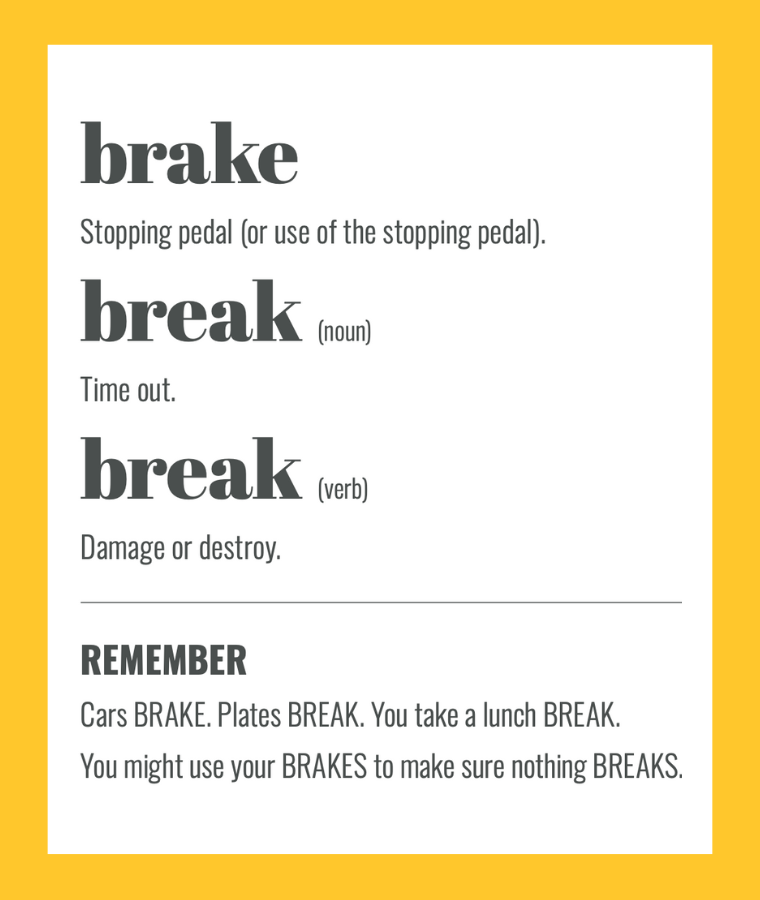
BRAKE vs BREAK: which is which? Tips and tricks to remember the difference
BRAKE and BREAK are easy to confuse – especially if you’re new to the English language. The fact that the two words sound the same – they’re homophones – means people commonly mix them up.
Here are my simple spelling tips to remember the difference between BRAKE and BREAK.
When to use BREAK
BREAK can be both a noun and a verb.
As a noun, BREAK means time out.
“It’s time for your lunch BREAK”
“Let’s take a BREAK”
As a verb, BREAK means damage or destroy.
“I dropped my phone but luckily it didn’t BREAK.”
When to use BRAKE
BRAKE can be both a noun and a verb.
As a noun, a BRAKE is the stopping pedal in a car or other vehicle.
As a verb, BRAKE means to slow down or stop – for example, a car.
Noun: “Remember to use the BRAKE to stop the car in good time.”
Verb: “I had to BRAKE hard to avoid the oncoming cyclist.”
Get more tips in The Little Book of Confusables
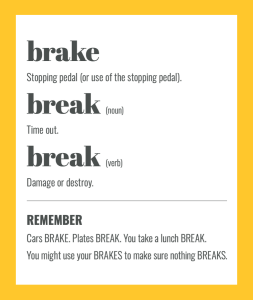
BREAK vs BRAKE. Excerpt from The Little Book of Confusables by Sarah Townsend.
Advise vs Advice: top tips to remember the difference

ADVISE vs ADVICE: do you know the difference?
ADVISE and ADVICE are easy to confuse. The fact that they look so similar trips people up time and time again.
Here are my simple tips to remember the difference between ADVISE and ADVICE.
ADVISE is a verb that means suggest, encourage or tell someone to do something.
“I ADVISE you to learn the difference between ADVISE and ADVICE.”
ADVICE is a noun.
The best way to remember this is that it ends with ICE, which is also a noun:
“That’s good ADVICE.”
Understanding the difference between the ISE and ICE endings can help you to remember the spellings of other similar word pairs.
Think DEVISE (verb) and DEVICE (noun), or PRACTISE (verb) and PRACTICE (noun).
(Note that the latter applies to the British English spelling only – US English has its own rules.)
Get more tips in The Little Book of Confusables
Accept or except: do you know the difference?
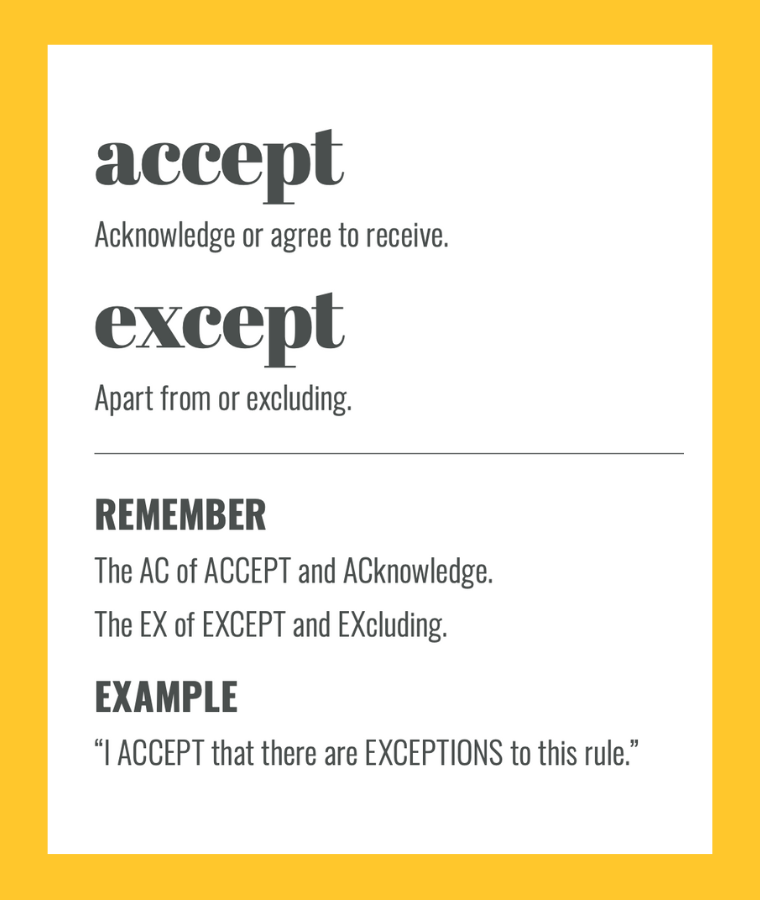
ACCEPT vs EXCEPT – simple tips to remember the difference
ACCEPT and EXCEPT are easy to confuse.
They may sound the same but they have different meanings… and I have a simple tip to remember the difference between them.
ACCEPT means to acknowledge, or agree to receive.
To remember this, think of the AC of ACCEPT and ACKNOWLEDGE.
EXCEPT means apart from, or excluding.
Think of the EX of EXCEPT and EXCLUDING.
Keep these tips in mind and you’ll stop making this common mistake in no time.


